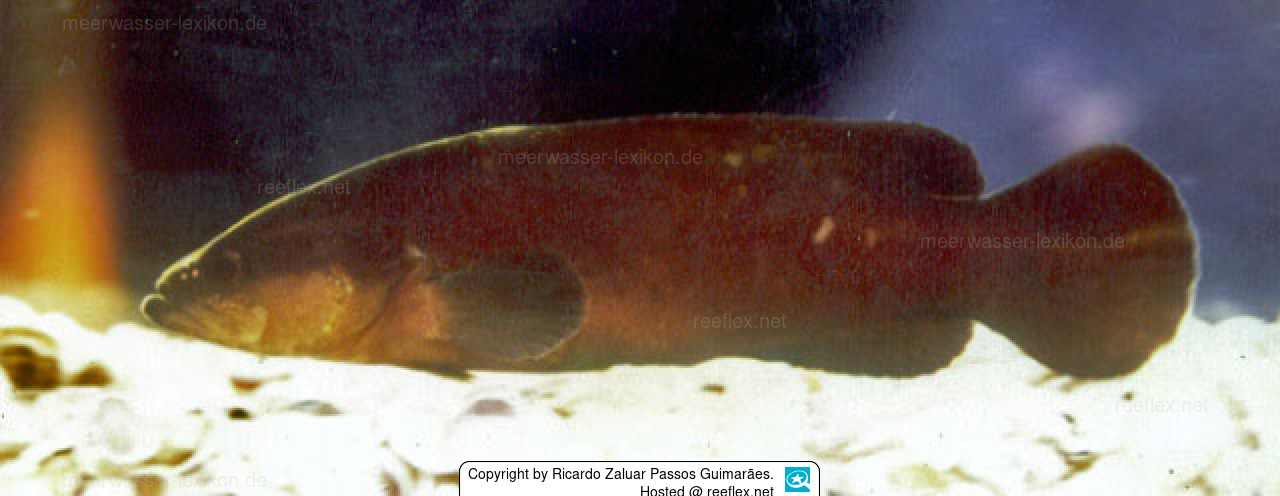Info
Soapfish owe their common name to a special characteristic: when excited, they can produce a toxic body mucus, which forms a bitter, slimy, soap-foam-like foam when excreted into the water, toxic mucus (Grammistine) and serves as a deterrent against predators.
This foam is hemolytic and toxic to fish.
This species is usually associated with muddy, sandy or rocky bottoms in estuarine and continental shelf reef areas, but is also found in mangrove zones and brackish waters.
The head and body of Rypticus randalli are brown with a blue-grey tinge, becoming lighter on the belly.
A cream-colored stripe along the midline from the tip of the mouth to the last dorsal fin spine is striking.
Etymology: The generic name “Ryptikus” comes from the Greek, where ‘ryptikos’, -e, -on means “easy to wash”.
Etymology: Species name “randalli” honors the most famous and renowned fish expert Dr. John (Jack) Randall † April 26, 2020.
Synonym: Rypticus brachyrhinus Courtenay, 1967 · unaccepted
This foam is hemolytic and toxic to fish.
This species is usually associated with muddy, sandy or rocky bottoms in estuarine and continental shelf reef areas, but is also found in mangrove zones and brackish waters.
The head and body of Rypticus randalli are brown with a blue-grey tinge, becoming lighter on the belly.
A cream-colored stripe along the midline from the tip of the mouth to the last dorsal fin spine is striking.
Etymology: The generic name “Ryptikus” comes from the Greek, where ‘ryptikos’, -e, -on means “easy to wash”.
Etymology: Species name “randalli” honors the most famous and renowned fish expert Dr. John (Jack) Randall † April 26, 2020.
Synonym: Rypticus brachyrhinus Courtenay, 1967 · unaccepted







 Ricardo Zaluar Passos Guimarães, Brasilien
Ricardo Zaluar Passos Guimarães, Brasilien




